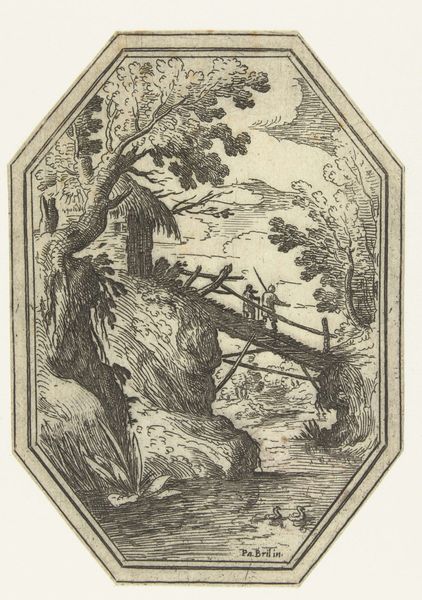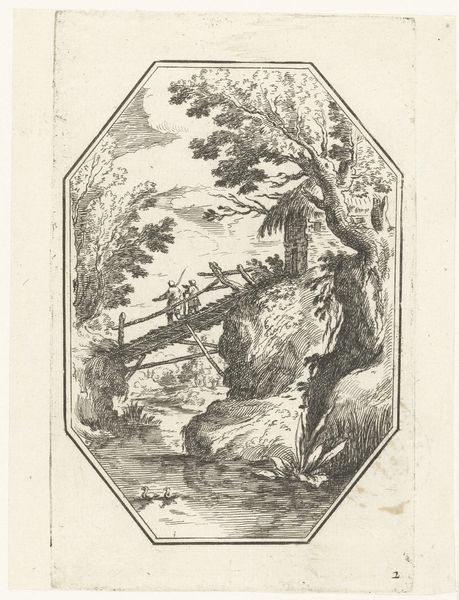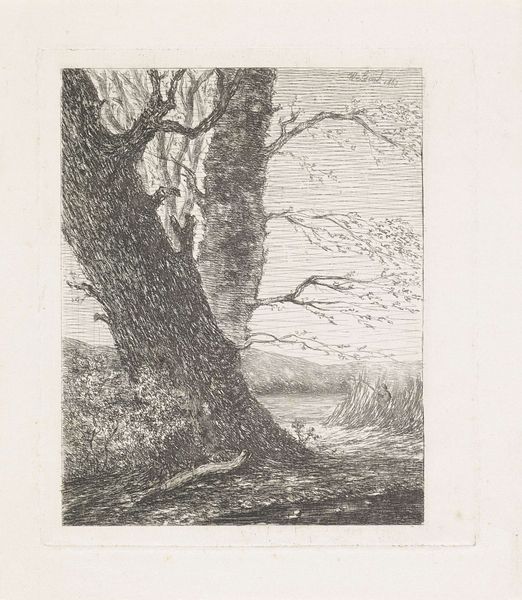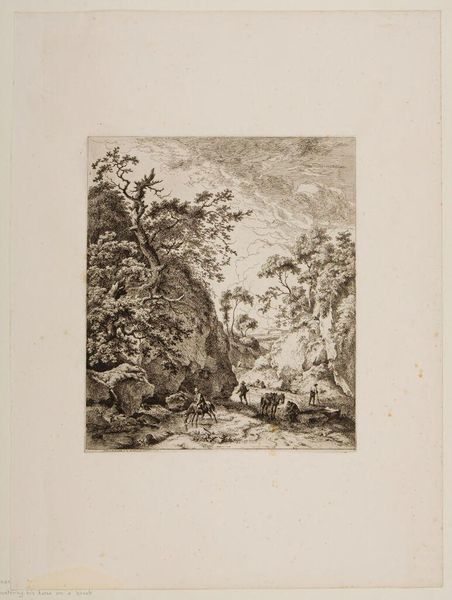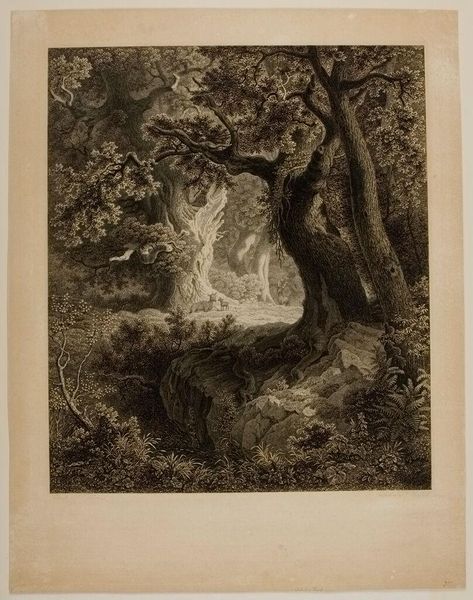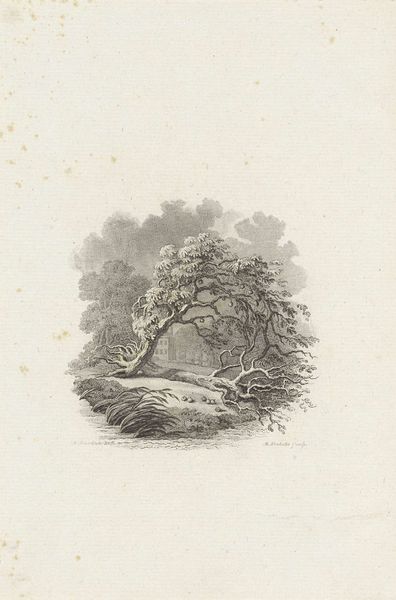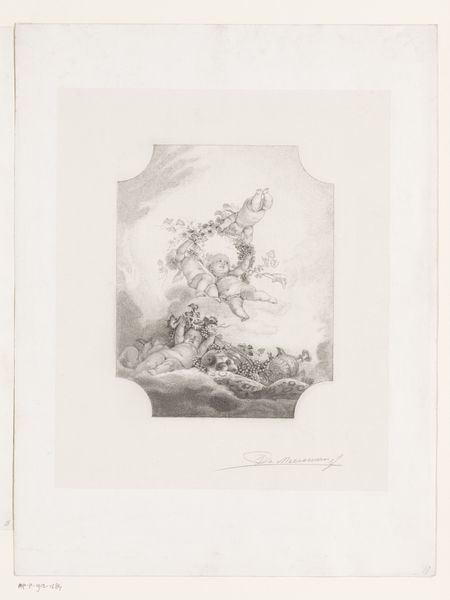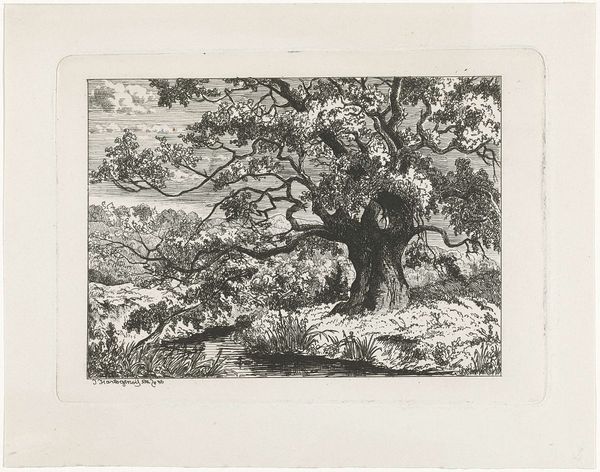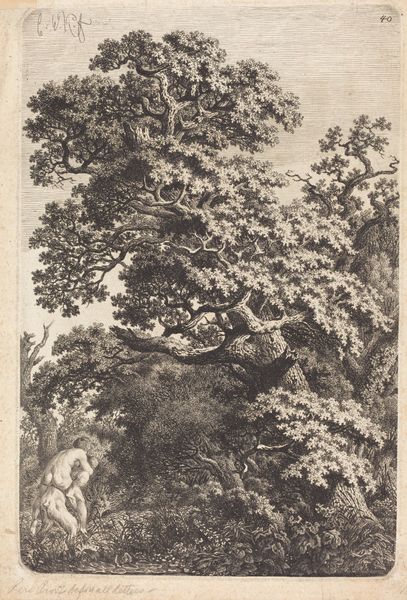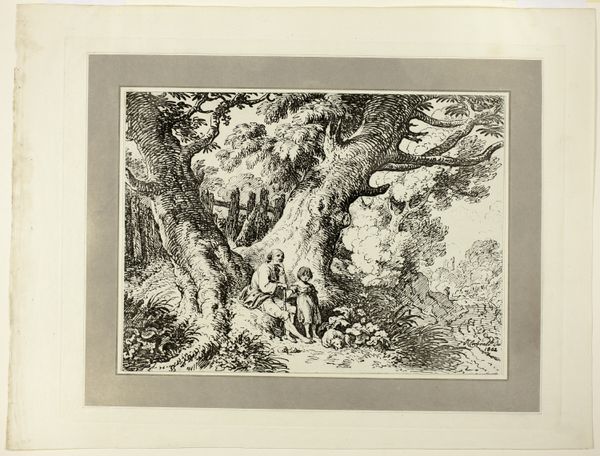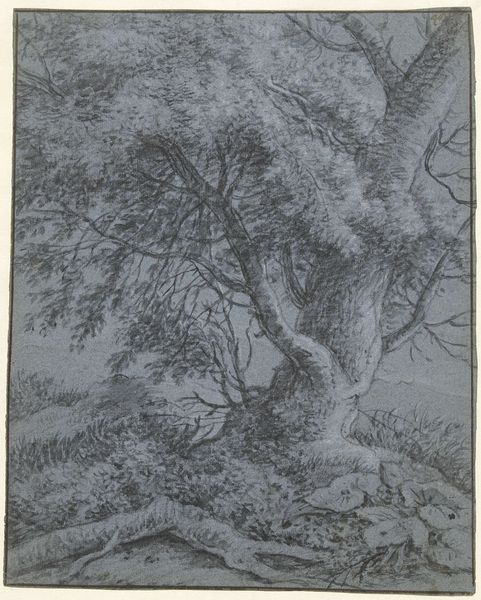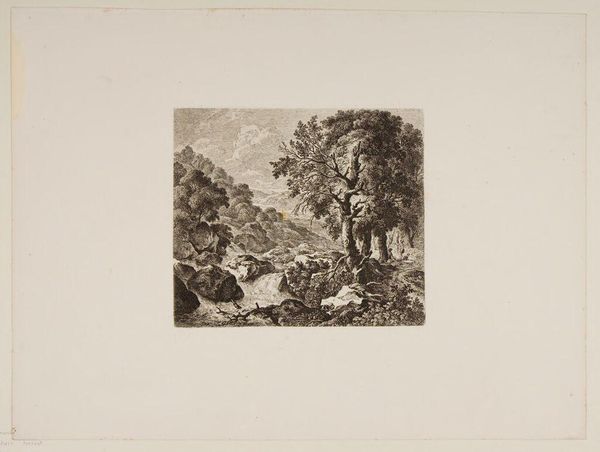
#
pencil drawn
#
amateur sketch
#
light pencil work
#
shading to add clarity
#
pencil sketch
#
old engraving style
#
incomplete sketchy
#
pen-ink sketch
#
pencil work
#
fantasy sketch
Dimensions: height 210 mm, width 265 mm
Copyright: Rijks Museum: Open Domain
Curator: Editor: This is "Uprooted Tree Trunk on the Coast" by Pierre Louis Dubourcq, created between 1854 and 1856. It looks like it was made with a pencil, and there's a sense of melancholy in this uprooted tree. What catches your eye? Curator: Well, beyond the immediate impression, I’m drawn to the material reality of this drawing. Think about the process: Dubourcq acquired paper, likely handmade with its own history of labor and material sourcing. The pencil itself, graphite mined and formed, is then used to represent something being broken, being severed, something already part of natural resource extraction and landscape alteration. What kind of statement is this object making when it depicts an object born from labor and resource? Editor: So, it’s more than just a pretty picture of a tree? The *act* of drawing with a manufactured pencil on paper *of* a landscape has political undertones? Curator: Exactly. And think about how that relates to consumption. This image would have circulated as an object, acquired and displayed. The very *idea* of an untouched "nature" is bought and sold, repackaged through the industrial act of creation as pencil drawing for consumption and entertainment! Editor: I never thought of it that way! So, seeing this as a material object connected to larger industries gives it so much more depth than just aesthetic beauty. Is that an early take on art impacting nature? Curator: You got it. That contrast reveals the complex relationship humans have developed with the physical environment and their production. We are left to reconsider the artwork through those layers and those implications. Editor: I think I am starting to appreciate art’s commentary on manufacturing and resource use so much more now. Thank you for expanding my view! Curator: And thank you for letting me revisit this piece with that critical perspective. It truly helps enrich my own thoughts on materialism in art history!
Comments
No comments
Be the first to comment and join the conversation on the ultimate creative platform.

